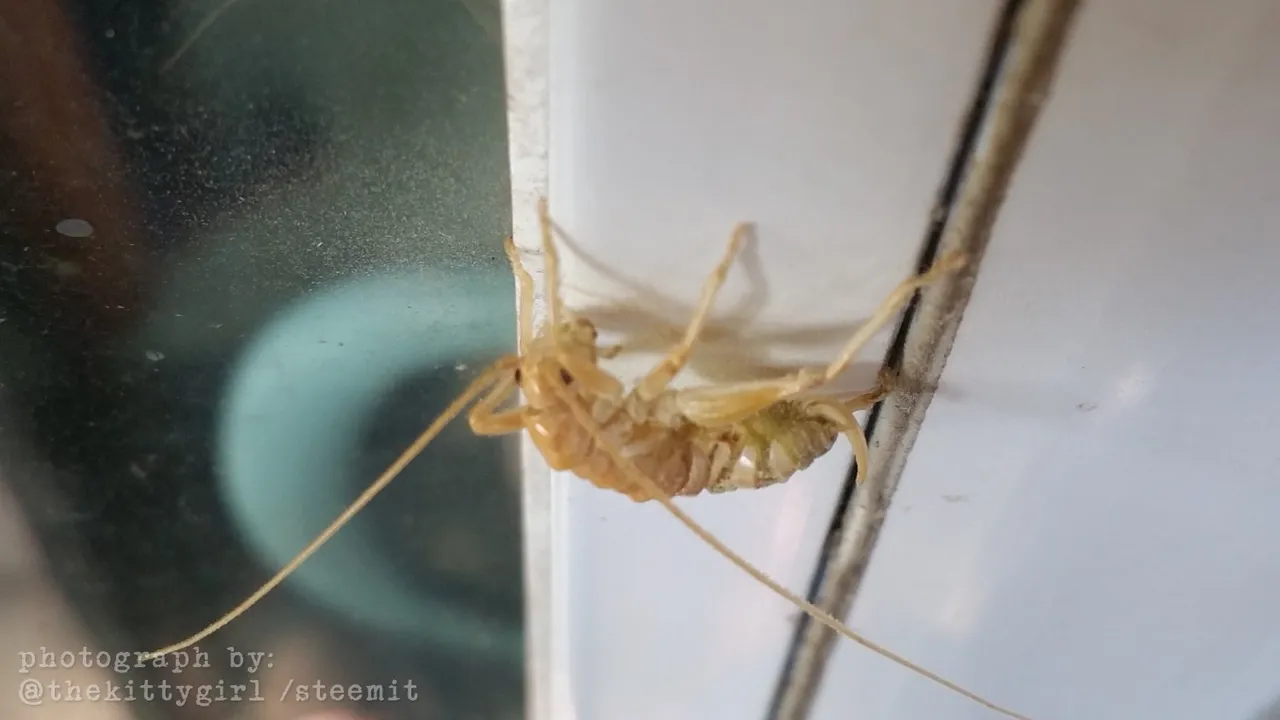
• PHOTO BY ME •
For many members of the animal kingdom, our skeletons are inside our bodies, acting as a framework for the muscles, organs, and other tissue that develops around it. That is called an endoskeleton.
For other members of the animal kingdom, their skeletons are outside their bodies, acting as a protective armor for the muscles, organs, and tissue that develops inside it. That is called an exoskeleton. Wikipedia cites the following examples:
Examples of animals with exoskeletons include insects such as grasshoppers and cockroaches, and crustaceans such as crabs and lobsters. The shells of certain sponges and the various groups of shelled molluscs, including those of snails, clams, tusk shells, chitons and nautilus, are also exoskeletons. Some animals, such as the tortoise, have both an endoskeleton and an exoskeleton. [2]

• PHOTO BY ME •
As it is not always practical to study insects, crustaceans or arachnids directly and because exuviae can be collected fairly easily, they can play an important part in helping to determine some general aspects of a species' overall life cycle such as distribution, sex ratio, production and proof of breeding in a habitat. [3]
Exoskeletons can be composed of various materials. Two of these are calcium carbonate and silica, both of which are substances that appear in certain rocks such as calcite and quartz. It is amazing how compounds can be utilized in such different ways!
So, keep your eyes open — you may see a bug, or you may see a "ghost" of a bug in the form of an exoskeleton! 
 😊
😊SOURCES
1 Wikipedia: Calcium Carbonate
2 Wikipedia: Exoskeleton
3 Wikipedia: Exuviae
4 Wikipedia: Moulting

a big hug is due to @enginewitty for designing the following personal banner for me 🤗




